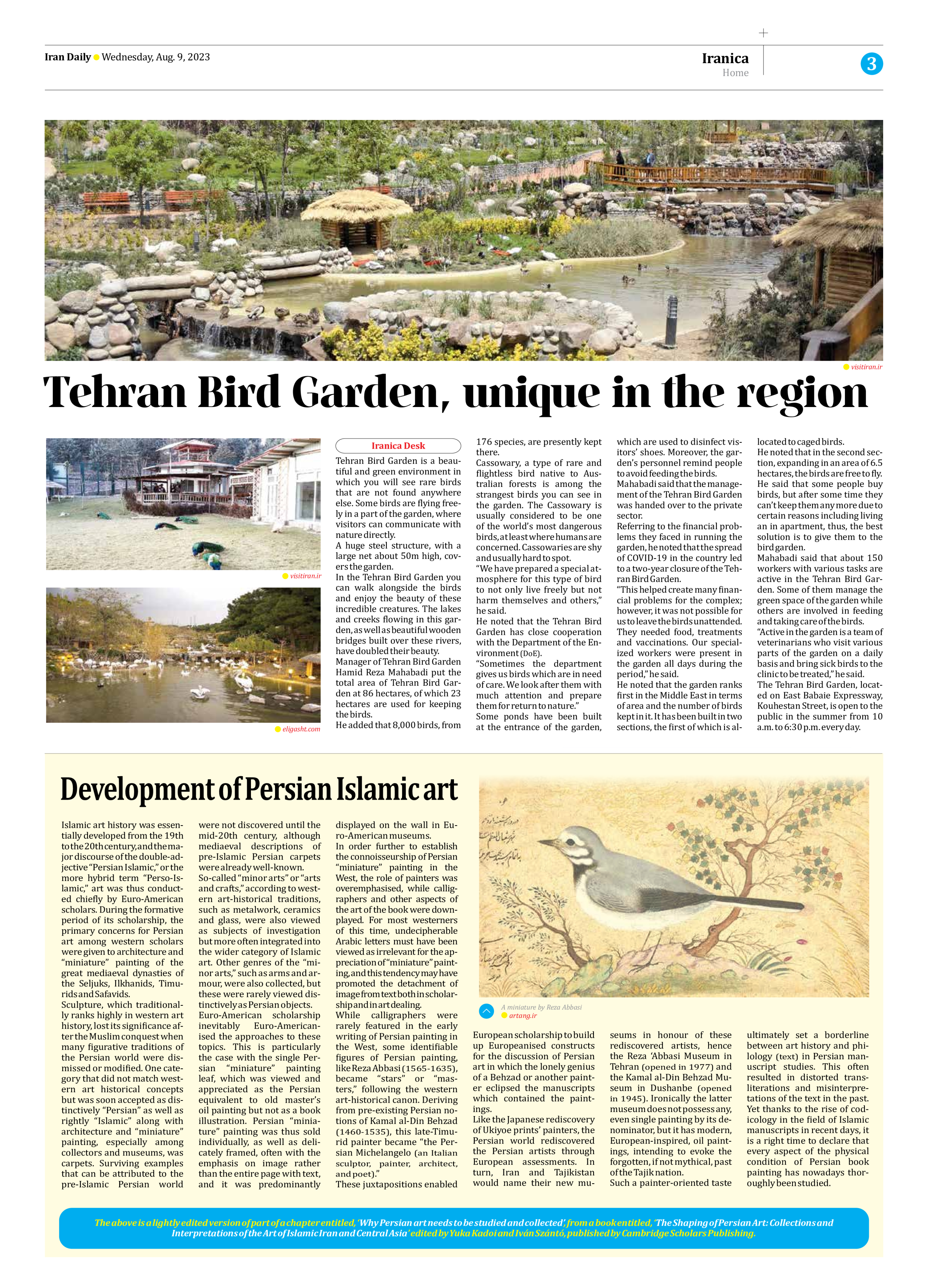
Development of Persian Islamic art
Islamic art history was essentially developed from the 19th to the 20th century, and the major discourse of the double-adjective “Persian Islamic,” or the more hybrid term “Perso-Islamic,” art was thus conducted chiefly by Euro-American scholars. During the formative period of its scholarship, the primary concerns for Persian art among western scholars were given to architecture and “miniature” painting of the great mediaeval dynasties of the Seljuks, Ilkhanids, Timurids and Safavids.
Sculpture, which traditionally ranks highly in western art history, lost its significance after the Muslim conquest when many figurative traditions of the Persian world were dismissed or modified. One category that did not match western art historical concepts but was soon accepted as distinctively “Persian” as well as rightly “Islamic” along with architecture and “miniature” painting, especially among collectors and museums, was carpets. Surviving examples that can be attributed to the pre-Islamic Persian world were not discovered until the mid-20th century, although mediaeval descriptions of pre-Islamic Persian carpets were already well-known.
So-called “minor arts” or “arts and crafts,” according to western art-historical traditions, such as metalwork, ceramics and glass, were also viewed as subjects of investigation but more often integrated into the wider category of Islamic art. Other genres of the “minor arts,” such as arms and armour, were also collected, but these were rarely viewed distinctively as Persian objects.
Euro-American scholarship inevitably Euro-Americanised the approaches to these topics. This is particularly the case with the single Persian “miniature” painting leaf, which was viewed and appreciated as the Persian equivalent to old master’s oil painting but not as a book illustration. Persian “miniature” painting was thus sold individually, as well as delicately framed, often with the emphasis on image rather than the entire page with text, and it was predominantly displayed on the wall in Euro-American museums.
In order further to establish the connoisseurship of Persian “miniature” painting in the West, the role of painters was overemphasised, while calligraphers and other aspects of the art of the book were downplayed. For most westerners of this time, undecipherable Arabic letters must have been viewed as irrelevant for the appreciation of “miniature” painting, and this tendency may have promoted the detachment of image from text both in scholarship and in art dealing.
While calligraphers were rarely featured in the early writing of Persian painting in the West, some identifiable figures of Persian painting, like Reza Abbasi (1565-1635), became “stars” or “masters,” following the western art-historical canon. Deriving from pre-existing Persian notions of Kamal al-Din Behzad (1460-1535), this late-Timurid painter became “the Persian Michelangelo (an Italian sculptor, painter, architect, and poet).”
These juxtapositions enabled European scholarship to build up Europeanised constructs for the discussion of Persian art in which the lonely genius of a Behzad or another painter eclipsed the manuscripts which contained the paintings.
Like the Japanese rediscovery of Ukiyoe prints’ painters, the Persian world rediscovered the Persian artists through European assessments. In turn, Iran and Tajikistan would name their new museums in honour of these rediscovered artists, hence the Reza ‘Abbasi Museum in Tehran (opened in 1977) and the Kamal al-Din Behzad Museum in Dushanbe (opened in 1945). Ironically the latter museum does not possess any, even single painting by its denominator, but it has modern, European-inspired, oil paintings, intending to evoke the forgotten, if not mythical, past of the Tajik nation.
Such a painter-oriented taste ultimately set a borderline between art history and philology (text) in Persian manuscript studies. This often resulted in distorted transliterations and misinterpretations of the text in the past. Yet thanks to the rise of codicology in the field of Islamic manuscripts in recent days, it is a right time to declare that every aspect of the physical condition of Persian book painting has nowadays thoroughly been studied.
The above is a lightly edited version of part of a chapter entitled, ‘Why Persian art needs to be studied and collected’, from a book entitled, ‘The Shaping of Persian Art: Collections and Interpretations of the Art of Islamic Iran and Central Asia’ edited by Yuka Kadoi and Iván Szántó, published by Cambridge Scholars Publishing.







